Today Current Affairs:22nd June 2022 for UPSC IAS exams, State PSC exams, SSC CGL, State SSC, RRB, Railways, Banking Exam & IBPS, etc
Table of Contents
Summer Solstice: 21st June

21st June is the day of the Summer Solstice in the northern hemisphere.
- The day is observed as the International Day of Yoga.
- Solstice is a Latin word that means ‘stalled sun’.
- It is a natural phenomenon that occurs twice every year, once in the summer and again during winter, in each hemisphere of the earth – Summer and Winter Solstice.
- It is the longest day and shortest night of the year in the Northern Hemisphere.
- During this, countries in the Northern Hemisphere are nearest to the Sun and the Sun shines overhead on the Tropic of Cancer (23.5° North).
- At latitudes of 23.5° are the Tropics of Cancer and Capricorn, north and south of the Equator.
- At 66.5° are the Arctic and Antarctic Circles, to the north and south.
- Latitudes are a measure of a location’s distance from the Equator.
- During the solstice, the Earth’s axis — around which the planet spins, completing one turn each day — is tilted in a way that the North Pole is tipped towards the sun and the South Pole is away from it.
- Typically, this imaginary axis passes right through the middle of the Earth from top to bottom and is always tilted at 23.5 degrees with respect to the sun.
National Chambal Sanctuary:

The Madhya Pradesh government has proposed to open 292 hectares for mining in five stretches on Chambal and its tributary Parvati rivers.
- The step is taken to free its forest department from devoting too much time, resources, and efforts in fighting illegal mining in the National Chambal Sanctuary.
- Sand mining has been banned in the sanctuary since 2006.
- National Chambal Sanctuary was set up in 1979 as a riverine sanctuary along an approximately 425 km length of the Chambal River.
- Its ravines stretches over 2-6 km wide along the Chambal River near the tri-point of Rajasthan, Madhya Pradesh and Uttar Pradesh.
- The National Chambal Sanctuary is listed as an Important Bird Area (IBA) and is a proposed Ramsar site.
- The National Chambal Sanctuary is home to critically endangered Gharial (small crocodiles), the red-crowned roof turtle and the endangered Ganges River dolphin.
- Chambal supports the largest population of Gharials in the wild.
- Only known place where nesting of Indian Skimmers is recorded in large numbers.
- Chambal supports 8 rare turtle species out of the 26 found in the country.
- Chambal is one of the cleanest rivers in the country.
- Chambal supports more than 320 resident and migrant birds.
- Locals directly depended on various resources of the Sanctuary.
- They farm along the river, extract river water for irrigation, practice sustenance and commercial fishing, and quarry san
Operation Sankalp:

Indian Navy’s stealth Frigate, INS Talwar is presently deployed for Op-Sankalp commemorating the 3rd continuous year of Indian Navy’s presence in the Gulf.
- The Indian Navy has launched ‘Operation Sankalp’ in the Persian Gulf and the Gulf of Oman as a measure to assure the safety and security of the Indian vessels.
- After the attacks on merchant ships in the Gulf of Oman in June 2019, Indian Navy had commenced Maritime Security Operations, code named Op-Sankalp, in the Gulf Region to ensure safe passage of Indian Flag Vessels transiting through the Strait of Hormuz.
- Twenty-three warships have been deployed till date for this operation and on an average 16 Indian-flagged merchant vessels are being provided safe passage each day in the Gulf region
- Indian Navy’s stealth Frigate, INS Talwar is presently deployed in the Gulf region.
- India is dependent for about 85% of its demand for oil on imports. In 2019-2020, around 62% of India’s oil imports valued at approximately 66 billion USD came from the Gulf region.
- Due to the prevailing security situation in the Persian Gulf, it is required to provide security to Indian-flagged merchant vessels transiting through the region.
INS Talwar:
- INS Talwar (F40) is the lead ship of the Talwar-class frigates of the Indian Navy.
- Its name means “Sword” in Hindi.
- Built in Russia, commissioned into the Indian Navy in June 2003.
Burmagomphus Chaukulensis : Rare Dragonfly
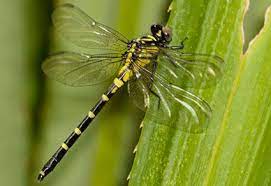
A rare dragonfly, Burmagomphus chaukulensis was spotted in Kerala.
- Earlier, a new species of dragonfly ‘Platygomphus benritarum’ was discovered in Assam.
- This is a dragonfly of genus Burmagomphus, which is represented by three species – B. Cauvericus, B. Pyramidalis and B. Laidlawi.
- While B. laidlawi is found throughout the Western Ghats,
- B. cauvericus is more restricted in its distribution.
- B. pyramidalis is found in the Western Ghats as well as in Peninsular India.
- All other species of the genus are found in the Western and Eastern Himalayas.
- The new species can be separated from its congeners by the markings on the lateral thorax and peculiar shape of anal appendages.
- This species is known to be endemic to the Western Ghats.
Highly Stressed States : RBI Study
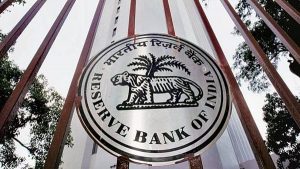
As per the Recent RBI study, five states -Bihar, Kerala, Punjab, Rajasthan and West Bengal are highly stressed states.
Status of states Debt:
- Punjab: its debt-GSDP ratio is projected to exceed 45 per cent in 2026-27
- Rajasthan, Kerala and West Bengal: projected to exceed the debt-GSDP ratio of 35 per cent by 2026-27.
- These states will need to undertake significant corrective steps to stabilise their debt levels.
- Ten states accounting for half of the total expenditure in India are Punjab, Rajasthan, Kerala, West Bengal, Bihar, Andhra Pradesh, Jharkhand, Madhya Pradesh, Uttar Pradesh and Haryana.
- Debt/GSDP ratio definition: It is a metric that shows what a state owes with what it produces.
- It indicates that particular state’s ability to pay back its debts.
Major Economies Forum On Energy And Climate (MEF):

At the virtual meeting of MEF, Union Minister calls upon the members of MEF to launch a global movement on LIFE i.e., Lifestyle for Environment
- Aim of the meeting: The MEF meeting was aimed at galvanising actions (both developed and developing countries) that are to strengthen energy security and tackle the climate crisis thereby building momentum for COP27.
- MEF was launched in 2009 by US President Barack Obama.
India at MEF 2022
- India has already installed 159 GW of non-fossil fuel-based electricity generation capacity.
- During the last 7. 5 years, India’s installed solar energy capacity has increased over 18 times.
- India’s annual per capita emissions are only a third of the global average and its cumulative GHG emissions are less than 4 percent.
- India’s Panchamrit goals are being fructified through one of the largest clean energy development plans in the world.
- India is on track to meet its commitments, through the adoption of low carbon policies across key sectors of our economy ranging from the green hydrogen mission to e-mobility.
Type-1 Diabetes:

In June 2022, the Indian Council of Medical Research (IMCR) released guidelines for the diagnosis, treatment, and management for type-1 diabetes. This is the first time the ICMR has issued guidelines specifically for type 1 diabetes, which is rarer than type 2.
- Type 1 diabetes is a condition where the pancreas completely stops producing insulin, the hormone responsible for controlling the level of glucose in blood by increasing or decreasing absorption to the liver, fat, and other cells of the body.
- This is unlike type 2 diabetes — where the body’s insulin production either goes down or the cells become resistant to the insulin.
- Type 1 diabetes is predominantly diagnosed in children and adolescents.
- Type 1 diabetes is much more severe than type 2. Unlike type 2 diabetes where the body produces some insulin and which can be managed using various pills, if a person with type 1 diabetes stops taking their insulin, they die within weeks as the body produces zero insulin.
- Symptoms in children’s include frequent urination, extreme thirst, and diabetic ketoacidosis (a serious condition where the body has a high concentration of ketones, a molecule produced when the body isn’t able to absorb glucose for energy and starts breaking down fats instead).
- There are over 10 lakh children and adolescents living with type 1 diabetes in the world, with India accounting for the highest numbers.
National Intelligence Grid (NATGRID):

The Ministry of Home Affairs (MHA) has curtailed the tenure of the Chief Executive Officer (CEO) of the National Intelligence Grid (NATGRID) and moved him to the Border Security Force (BSF).
- Earlier this year, Mr. Gupta was given an extension as NATGRID CEO as the post was upgraded to the rank of Additional Secretary. He is a 1989 batch IPS officer.
- NATGRID is an online database for collating scattered pieces of information from more than 20 organisations in the field of telecom, tax records, bank, immigration, etc. to enable the generation of intelligence inputs.
- At least 10 central agencies like IB, R&AW and others will have access to the data on a secured platform for counter-terror investigations.
- The project was started in 2009 in the aftermath of 26/11 Mumbai terror attacks.
Kudankulam Nuclear Power Plant:
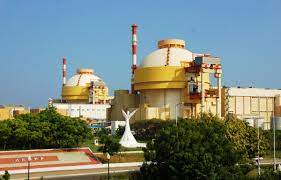
Rosatom State Corporation of Russia has supplied the first batches of more reliable and cost-efficient nuclear fuel over the existing one, the TVS-2M nuclear fuel, to India for the Units 1 and 2 of Kudankulam Nuclear Power Plant (KNPP).
- Once the new TVS-2 M fuel is used in the next refuelling, the reactor will start operations with an 18-month fuel cycle.
- It means the reactor, which has to be stopped for every 12 months for removing the spent fuel and inserting the fresh fuel bundles and allied maintenance, will have to be stopped for every 18 months.
- Compared to the current fuel model, the TVS-2M fuel assemblies have a number of advantages making them more reliable and cost-efficient.
- Firstly, it is the rigidity of a bundle. Because of the welded frame, the fuel assemblies in the reactor core retain their geometry.
- The spacer grids protect the fuel rod cladding from fretting wear and the additional spacer grid makes the fuel assemblies more vibration-resistant.
- Secondly, the new fuel has increased uranium capacity — one TVS-2M assembly contains 7.6% more fuel material as compared to the earlier fuel bundles.
- Operation in longer fuel cycles also enhances the economic efficiency of a plant: As reactors have to undergo stoppage and refueling less frequently, the power units can produce more electricity.
- Russia is building the KNPP under an Inter-Governmental Agreement (IGA) of 1988 and follow on agreements in 1998 and 2008.
- The first stage, consisting of power units No. 1 and No. 2, was commissioned in 2013 and 2017, respectively.
- Power units No. 3, 4 and No. 5, 6 are are currently under construction.
12th WTO Ministerial Conference:
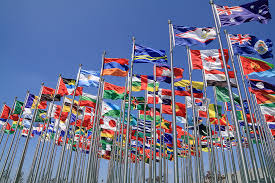
The 12th Ministerial Conference of the World Trade Organization (WTO) concluded.
- The key areas of discussions were WTO’s response to the pandemic, Fisheries subsidies negotiations, Agriculture issues including Public Stockholding for Food security, WTO Reforms and Moratorium on Custom Duties on Electronic Transmission.
- The 164-member World Trade Organization held its first ministerial conference in nearly five years, following Covid-19 postponements.
12th Ministerial Conference:
- Members reaffirmed the foundational principles of the WTO and committed to an open and inclusive process to reform all its functions, from deliberation to negotiation to monitoring.
- Notably, they committed to work towards having a well-functioning dispute settlement system accessible to all members by 2024.
- It would curb ‘harmful’ subsidies on illegal, unreported and unregulated fishing for the next four years, to better protect global fish stocks.
- Since 2001, member states have been negotiating the banning of subsidies that promote overfishing.
- India and other developing countries were able to win some concessions in this agreement.
- They successfully lobbied to remove a section of the proposal that would threaten some subsidies which would assist small-scale artisanal fishing Artisanal and traditional farmers would not face any restrictions under this agreement.
- Members agreed to a binding decision to exempt food purchased by the UN’s World Food Programme (WFP) for humanitarian purposes, from any export restrictions.
- In light of the global food shortages and rising prices caused by the war between Ukraine and Russia, the group’s members issued a declaration on the importance of trade in global food security and that they would avoid bans on food exports.
- However, countries would be allowed to restrict food supplies to ensure domestic food security needs.
- From 2017-2020, developing countries lost a potential tariff revenue of around USD 50 billion on imports from only 49 digital products.
- WTO members had first agreed to not impose custom duties on electronic transmissions in 1998, when the internet was still relatively new. The moratorium has been periodically extended since then.
- However, all members agreed to continue the long standing moratorium on custom duties on e-commerce transmissions until the subsequent Ministerial Conference or until 31st March 2024, depending on whichever comes first.
- WTO members agreed to temporarily waive intellectual property patents on Covid-19 vaccines without the consent of the patent holder for 5 years, so that they can more easily manufacture them domestically.
- This “will contribute to ongoing efforts to concentrate and diversify vaccine manufacturing capacity so that a crisis in one region does not leave others cut off.”
- The current agreement is a watered down version of the original proposal made by India and South Africa in 2020.
- They had wanted broader intellectual property waivers on vaccines, treatments and tests.
- Rich pharmaceutical companies had strongly opposed this, arguing that IP’s do not restrict access to Covid vaccines and that the removal of patent protections gives researchers that quickly produced life saving vaccines, a negative message.
- The waiver agreed by the WTO was criticized by advocacy groups for being narrow in scope, as it did not cover all medical tools like diagnostics and treatments.
- “This agreement fails overall to offer an effective and meaningful solution to help increase people’s access to needed medical tools during the pandemic as it does not adequately waive IP on all essential Covid-19 medical tools and it does not apply to all countries.
Listing Of Terrorist Under UNSC 1267 Committee:
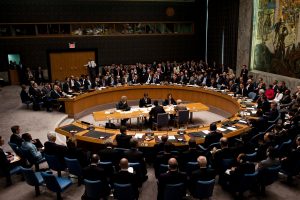
India and the US jointly proposed to list Makki, a top LeT (Lashkar-e-Taiba) Militant, under the UN Security Council’s Al-Qaeda and ISIL (Islamic State of Iraq and the Levant) Sanctions Committee which is also known as the UNSC 1267 Committee.
- But, China, placed a “technical hold” on the proposal to list Makki and this measure can last for up to six months at a time.
Islamic State in Iraq and the Levant (ISIL), also called Islamic State in Iraq and Syria (ISIS) is the Islamic State, transnational Sunni insurgent group operating primarily in western Iraq and eastern Syria.
UNSC 1267 committee:
- It was first set up in 1999, and strengthened after the September, 2001 attacks. It is now known as the Da’esh and Al Qaeda Sanctions Committee.
- It comprises all permanent and non-permanent members of the United Nations Security Council (UNSC).
- The 1267 list of terrorists is a global list, with a UNSC stamp. It is full of Pakistani nationals and residents.
- It is one of the most important and active UN subsidiary bodies working on efforts to combat terrorism, particularly in relation to Al Qaeda and the Islamic State group.
- It discusses UN efforts to limit the movement of terrorists, especially those related to travel bans, the freezing of assets and arms embargoes for terrorism.
- India has made at least three attempts in the last decade — in 2009, 2016 and 2017 — to list JeM chief as “global terrorist”. All attempts have been blocked by China at Pakistan’s behest.
- Any member state can submit a proposal for listing an individual, group, or entity.
- The proposal must include acts or activities indicating the proposed individual/group/entity had participated “in the financing, planning, facilitating, preparing, or perpetrating of acts or activities” linked to “ISIL (Da’esh), Al-Qaida or any cell, affiliate, splinter group or derivative thereof”.
- Decisions on listing and de-listing are adopted by consensus.
- The proposal is sent to all the members, and if no member objects within five working days, the proposal is adopted.
- An “objection” means curtains for the proposal.
- Any member of the Committee may also put a “technical hold” on the proposal and ask for more information from the proposing member state. During this time, other members may also place their own holds.
- The matter remains on the “pending” list of the Committee until such time as the member state that has placed the hold decides to turn its decision into an “objection”, or until all those who have placed holds remove them within a timeframe laid down by the Committee.
- Pending issues must be resolved in six months, but the member state that has placed the hold may ask for an additional three months.
- At the end of this period, if an objection is not placed, the matter is considered approved.
Post-2020 Global Biodiversity Framework:

A group of environmental scientists, ecologists and policy experts have posited that the draft of the Post-2020 Global Biodiversity Framework fails to account for the totality of chemical pollutants that threaten ecosystems globally.
Post 2020 Global Biodiversity Framework:
- It is a new framework that will guide actions worldwide through 2030, to preserve and protect nature and its essential services to people.
- It aims to spur urgent and transformative action by Governments and all of society to contribute to the objectives of the Convention on Biological Diversity, its Protocols, and other biodiversity related multilateral agreements, processes and instruments.
- The framework is built around a theory of change which recognizes that urgent policy action globally, regionally and nationally is required to transform economic, social and financial models.
- Four goals to achieve by 2050:
- To halt the extinction and decline of biodiversity.
- To enhance and retain nature’s services to humans by conserving.
- To ensure fair and equitable benefits to all from use of genetic resources.
- To close the gap between available financial and other means of implementation and those necessary to achieve the 2050 Vision.
- 2030 Action Targets: The framework has 21 action-oriented targets for urgent action over the decade to 2030, which includes:
- To bring at least 30% of land and sea under the world’s protected areas.
- A 50% greater reduction in the rate of introduction of invasive alien species, and controls or eradication of such species to eliminate or reduce their impacts.
- Reducing nutrients lost to the environment by at least half, and pesticides by at least two thirds, and eliminating the discharge of plastic waste.
- Nature-based contributions to global climate change mitigation efforts of at least 10 GtCO2e (gigatonnes of equivalent carbon dioxide) per year, and that all mitigation and adaptation efforts avoid negative impacts on biodiversity.
- Redirecting, repurposing, reforming or eliminating incentives harmful for biodiversity, in a just and equitable way, reducing them by at least USD 500 billion per year.
Ban On Single-Use Plastic:
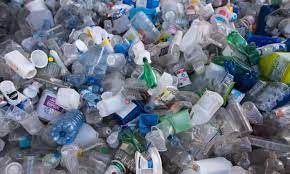
The Centre has defined a list of single-use plastic items that will be banned from 1st July 2022.
- The manufacture, import, stocking, distribution, sale and use of notified single-use plastic, including polystyrene and expanded polystyrene, commodities shall be prohibited with effect from the 1st July, 2022.
- It refers to plastic items that are used once and discarded.
- Single-use plastic has among the highest shares of plastic manufactured and used — from packaging of items, to bottles (shampoo, detergents, cosmetics), polythene bags, face masks, coffee cups, cling film, trash bags, food packaging etc.
- According to a 2021 report of the Minderoo Foundation, an Australian philanthropic organization, single-use plastics account for a third of all plastic produced globally, with 98% manufactured from fossil fuels.
- Single-use plastic also accounts for the majority of plastic discarded – 130 million metric tonnes globally in 2019 — all of which is burned, buried in landfills or discarded directly into the environmen.
- On the current trajectory of production, it has been projected that single-use plastic could account for 5-10% of greenhouse gas emissions by 2050.
- The report found that India features in the top 100 countries of single-use plastic waste generation – at rank 94 (the top three being Singapore, Australia and Oman).
- With domestic production of 11.8 million metric tonnes annually, and import of 2.9 MMT, India’s net generation of single-use plastic waste is 5.6 MMT, and per capita generation is 4 kg.




